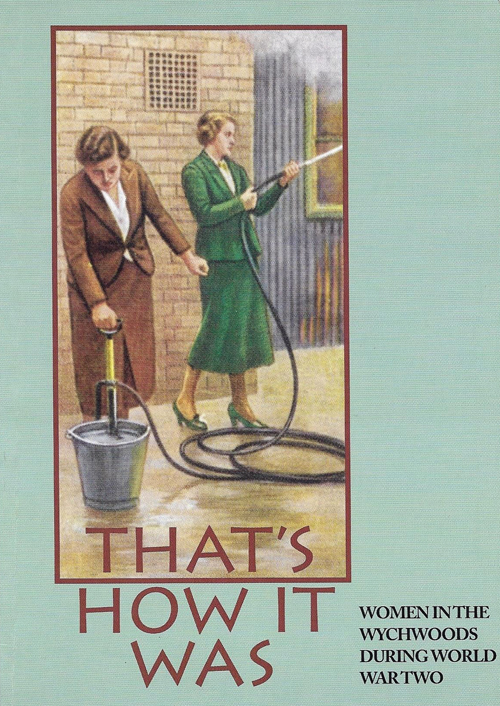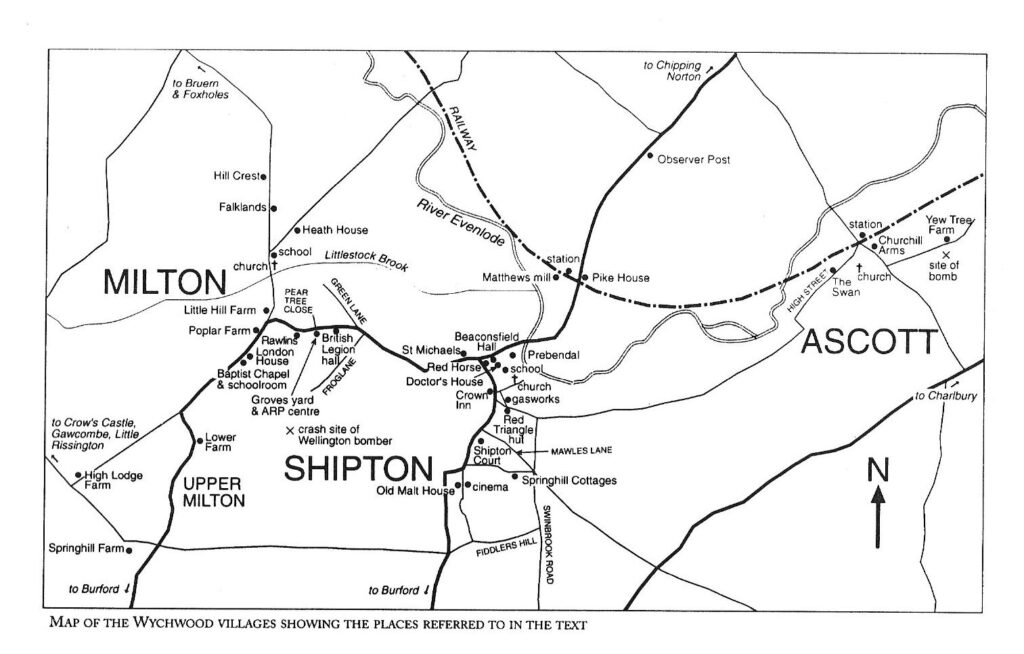“That’s How it Was” | Introduction | Wychwood Women : The Interviewees | Declaration of War | The Arrival of Evacuees| School Time | Preparing for War at Home | Soldiers and Airmen | For the Common Cause | Dr Scott and the Canteen | Domestic Life | We Were Lucky Out Here: Food Rationing | Work for Women Outside the Home | The Effects of War

… from the Wychwoods “That’s How It Was” Publication
Is it possible to capture a sense of what life was like in the Wychwoods during the Second World War? The area enjoyed moments of celebrity with the brief internment of the Mosleys at the Shaven Crown Inn and the presence of Christopher Fry’s wife in a tiny rented cottage. However, the real 1939-1945 story rests in the memories of long time local residents.
In the Spring and Summer of 1999 we asked women who spent at least part of the War period in Shipton under Wychwood, Milton under Wychwood and Ascott under Wychwood, and who still live locally, to talk to us about their recollections. With their willing cooperation, we also tape-recorded the conversations and then transcribed them so that afterwards we could study what was said.

For several, memory extended back well before 1939, and for Rose Burson, aged 99, the First World War seemed as vivid as the Second and ‘much worse‘, because members of the family were killed: ‘I lost a brother, I lost two brothers-in-law‘.
It is more than 60 years since the declaration of war on 3 September 1939, and memory is a fragile witness, inevitably affected by later experience. People have read about war-time and seen films about it – some historic, some reconstructions. They are also each day made aware of scenes from all over the world. As Vi Smith, aged 89, reflected ‘Television puts everything else behind it, doesn’t it?‘
This comment well sums up how our viewpoints are formed by the media.
The simplest and most spontaneous memories were perhaps the most graphic. Looking back, people’s impressions were often of the 30s and 40s in general, rather than specifically the war years. Rationing did not end with VE day or VJ day. But common themes emerged, giving us confidence in the general coherence of our picture.
In what follows we have used people’s own words and have identified the speakers by their initials [Editor’s Note: for this web version, we use full names in bold]. We also used notes made of an interview with Mrs Winifred Dolton who died in 1994 and a letter from Mrs Brenda Bishop who now lives in USA. Also, for background information, the minute books of the Wychwood Women’s Institute and the Shipton and Milton Comforts Fund and the log books of Shipton and Milton under Wychwood village schools.
We thank all those who were willing to join in this Oral History project, and all who helped us prepare the material for publication.
Anthea Jones, Sue Jourdan, John Rawlins, Janet Wallace and Trudy Yates
“That’s How It Was” Menu
These pages are reproduced from the Society’s publication “That’s How It Was”, featuring women in the Wychwoods during World War Two. The texts and images were published in the year 2000, and deserve a place in our expanding online archive. Please bear in mind as you read our texts in these pages, that we reproduce them as published in the year of publication.
Select from:
“That’s How it Was” | Introduction | Wychwood Women : The Interviewees | Declaration of War | The Arrival of Evacuees| School Time | Preparing for War at Home | Soldiers and Airmen | For the Common Cause | Dr Scott and the Canteen | Domestic Life | We Were Lucky Out Here: Food Rationing | Work for Women Outside the Home | The Effects of War

